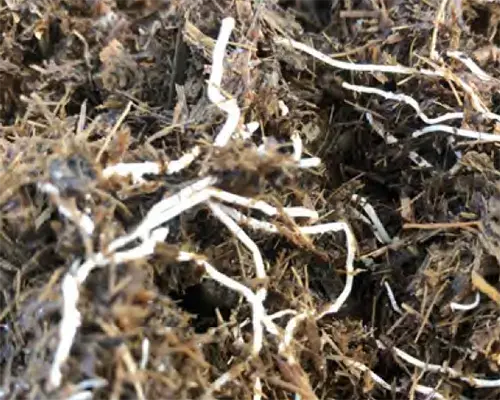by Professor Jennifer Dungait
Loss of soil carbon, of which soil microbes are a living part, is a primary indicator of soil degradation. Recycling carbon-rich by-products of rural, urban and industrial activities back to soil can help to rebuild soil carbon and presents an opportunity to mitigate climate change as part of a circular economy approach to sustainable waste management.
The benefits of increasing soil organic or inorganic carbon for soil carbon sequestration and soil microbial activity depends on the individual characteristics of the recycled by-product and the receiving soil environment. A range of waste materials are available for land spreading on farms, both organic (derived from living organisms) and inorganic (minerals derived from rocks).
Policy priorities
The following points should be highlighted in determining future policy on recycling of bio-wastes and residues:
- Repurposing organic and inorganic materials from waste streams as recycled by-products for carbon sequestering activities in farm soils, that would otherwise go to landfill, is a virtuous intention
- Large and repeated applications of recycled by-products are generally required to create measurable increases in soil organic carbon
- As the living part of the soil carbon pool, the soil microbial community plays a key role in carbon sequestration and is affected by the specific properties of different recycled by-products
- Risks associated with land spreading of recycled by-products must be considered, including potential toxic and polluting effects, and include full life cycle assessments of greenhouse gas emissions

Fungal growth in digestate fibre
Potential benefits of recycled organic by-products for soil carbon cycling
Organic recycled by-products like composts, digestates and biochars are relatively familiar soil amendments compared to inorganic recycled by-products.
Applications of organic materials can help to build soil carbon, but experiments in the UK suggest that repeated applications of bulky organic by-products over several years are needed to create a measurable change in soil organic carbon contents. For example, applications of composts at rates to provide 250 kg N/ha for 9 years, or large single application rates are needed to achieve short-term effects, such as 50 tonnes of biochar/ha. However, if by-products contain sufficient nutrients to supplement or replace synthetic fertiliser inputs, they can further reduce the carbon footprint of farming as part of nutrient management plans.
Composts and digestates have their own microbial communities that can increase the size of the microbial biomass directly by inoculating the soil with live bacteria and fungi. Because conditions in the soil are different from those in the compost pile or anaerobic digester, the microorganisms may die quite quickly, but their remains provide an important source of carbon and nutrients in the soil.
The effect of applying organic recycled by-products on soil microbial biomass, activity and diversity is generally positive. There is a direct relationship between desirable soil structure and organic carbon content that is related to an increase in microbial activity.
The addition of bulky organic recycled by-products causes physical increases in soil volume and air space and helps to control soil moisture contents which provides suitable conditions for soil microorganisms to grow and multiply.
Other benefits include the treatment of soil acidification (caused by long-term, over-application of nitrogenous fertilisers) by applying recycled by-products with a high pH, like biochar and silicate-rich rocks.
Potential benefits of recycled inorganic by-products for soil carbon cycling
Inorganic carbon sequestration by rock weathering may offer a novel solution to mitigate climate change which is fundamentally different from organic carbon sequestration.
Dust from silicate-rich rocks such as basalt, dolerite quarry fines, and industrial by-products including cement and slags from iron and steel manufacturing, can be applied to acidic farmed soils, instead of limestone to increase soil pH.
The CO2 dissolved in rainwater forms a weak acid that reacts with the base cations (i.e. ammonium, calcium, magnesium, potassium and sodium) in the rock dust forming dissolved carbonates that either leach from soils into waterways ultimately ending up buried in ocean sediments, or form secondary carbonates in soils, where they can remain for many millennia.
A recent experiment showed that arbuscular mycorrhizal fungi (AMF) can grow in artificial soils formed from crushed dolerite and concrete, typical of urban demolition waste. As the growth of mycorrhizal fungi increases soil organic carbon, and the rock dust forms inorganic carbon, it appears that dual mechanisms for carbon sequestration can both be active in soils treated with silicate-rich rock dust.
Risks associated with applications of recycled by-products to soils
In general, carbon itself may become a pollutant if dissolved and particulate forms leach through or run off soils into watercourses, potentially causing oxygen deficiencies that affect aquatic organisms, and water quality issues including changes in taste and colour.
Recycled by-products may contain toxic elements including heavy metals and plastics that can cause pollution and contamination of the soil and wider environment and might pose human health risks. The pyrolysis process for biochar production may be a source of polycyclic aromatic hydrocarbons (PAHs) which are a threat to environmental and human health because they are potentially carcinogenic.
Despite the acknowledged and potential benefits of applying recycled organic and inorganic by-products to increase soil carbon, it is important to remember that the carbon sequestration potential depends on full accounting for emissions of all greenhouse gases (CO2, N2O and CH4) associated with their production and transport to the point of use, plus their effects on soil processes. However, potential emissions may be offset if crop growth both above and below ground increases due to improvements in soil quality and fertility.
Application of plentiful soluble carbon and nutrients (nitrogen, phosphorus and potassium) in the liquid fraction of digestates to soils can cause substantial emissions of CO2 and N2O, volatilisation of ammonia (NH4+) and may also present a pollution risk to local waterways through leaching. While the porous structures of biochars and some composts with high C:N ratios can retain nutrients which can be beneficial for preventing water and air pollution, this nutrient immobilisation has the potential to increase the carbon footprint of crop production in amended soils, if additional fertiliser application is required to support crop growth.
Primary types of organic by-products recycled to land
Digestates and composts are bulky organic materials considered as renewable fertilisers created from organic materials sourced on- and off-farm, while biochar is manufactured from various organic feedstocks specifically for the long-term storage of carbon, or as a by-product of charcoal production.
- Digestates are by-products of anaerobic digestion, which is the controlled biological decomposition of organic materials such as food wastes or animal manures in the absence of oxygen. Digestate contains less organic carbon than compost (C:N ratio 4-20) but relatively large amounts of readily available nitrogen, mostly as ammonium nitrogen, plus phosphate, potash, sulphur, magnesium. Digestate is normally produced ‘whole’ (a slurry with 3-10% dry matter), but it can be separated into fibre (20-40% dry matter) or liquor (1-6% dry matter) fractions. The larger dry matter content of the fibre fraction indicates a greater organic matter content.
- Composts are used as soil conditioners due to their large organic matter content (40-60% dry matter) and as a source of plant nutrients. They are produced by controlled biological decomposition in the presence of oxygen of green wastes such as lawn clippings and woody material, or from a mix of green waste and food waste. The nutrient value of compost primarily includes readily available potash, phosphate, magnesium and sulphur, but contain less readily available nitrogen compared with digestate due to losses during composting (C:N ratio >30).
- Biochars are produced from a range of organic materials by heating them in an oxygen-depleted atmosphere in a process known as pyrolysis to produce a porous carbon-rich solid (C:N ratio >30-500) that is resistant to decomposition and intended for the long-term storage of carbon in the soil. Biochar from ‘charcoal fines’ is a by-product of charcoal production. The specific physical and chemical characteristics of each type of biochar is based on the pyrolysis conditions and feedstock, and they may contain substantial quantities of basic cations, potassium and phosphorus. Biochars are not manufactured to provide nutrients, but their porous structure can hold onto nutrients in soils that have low cation exchange capacity and low organic matter content.
